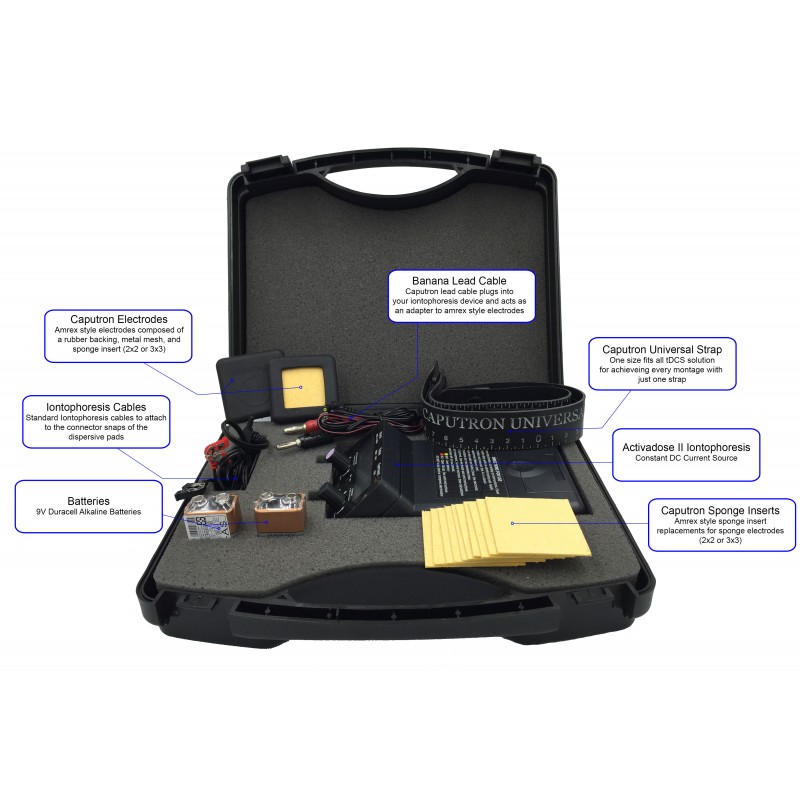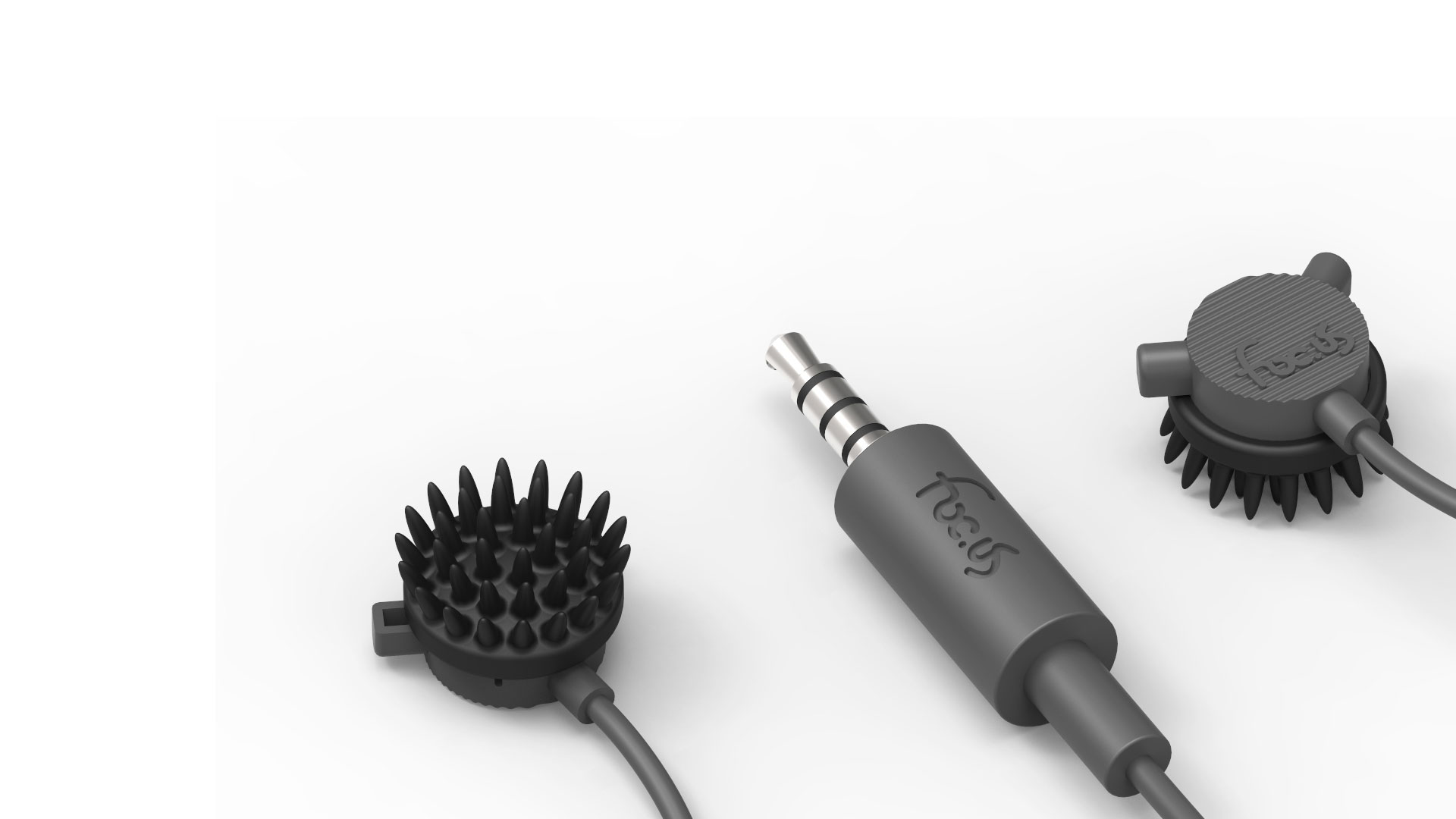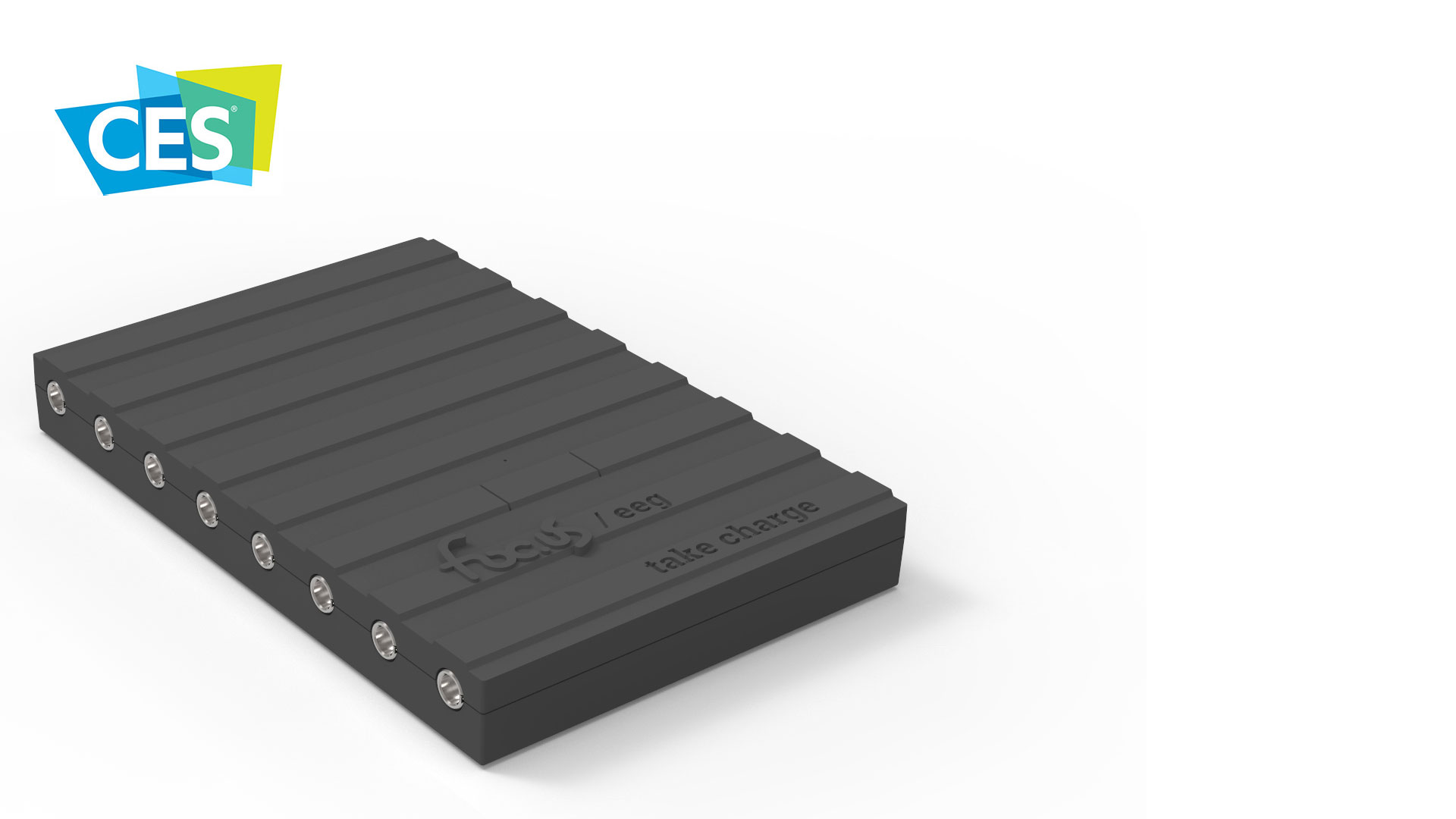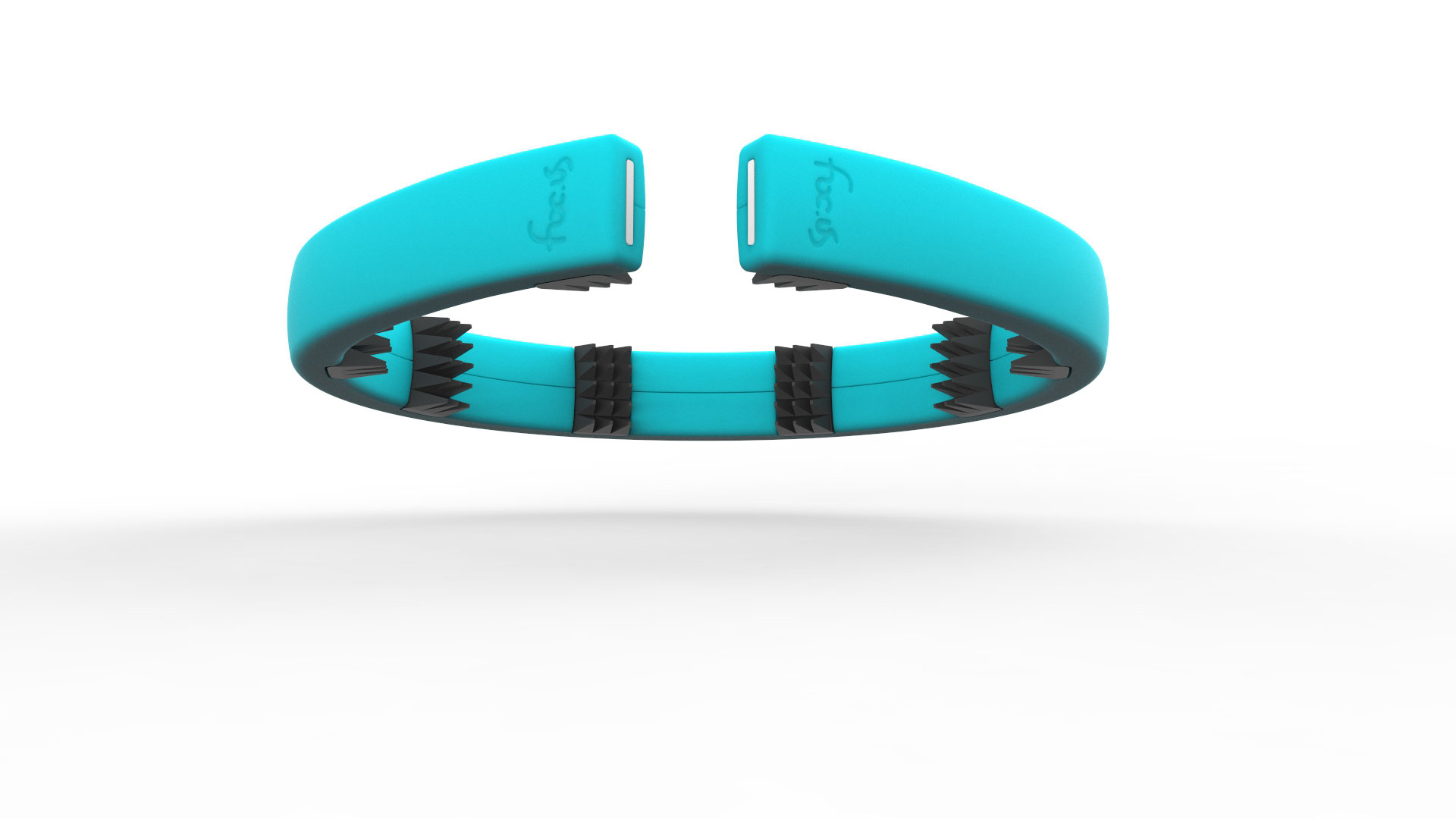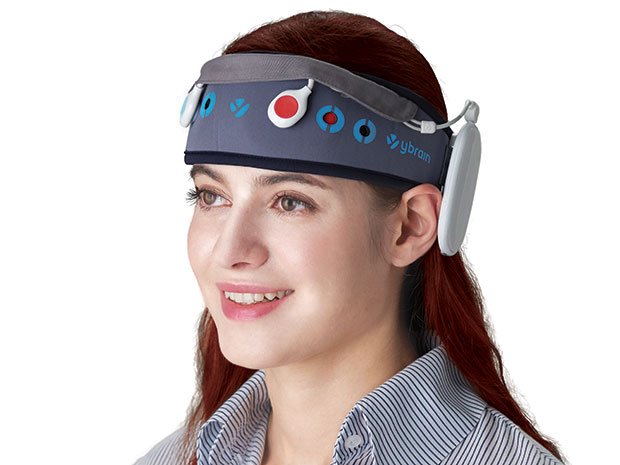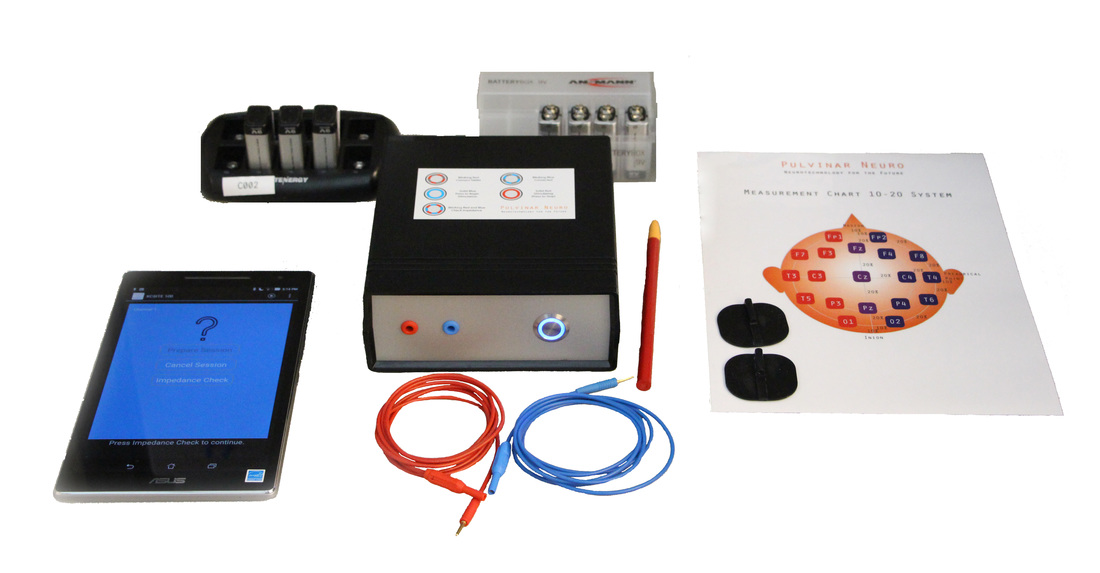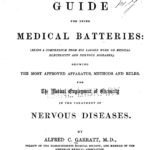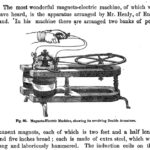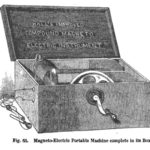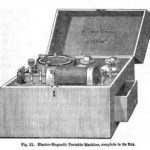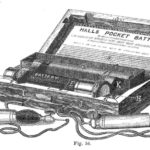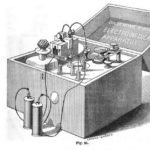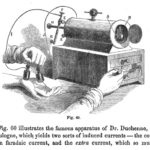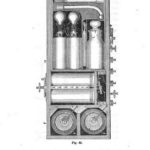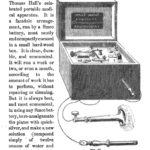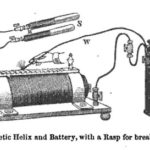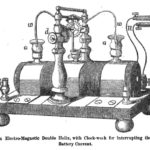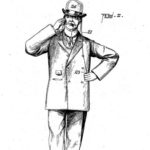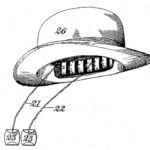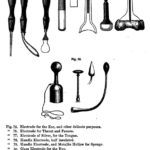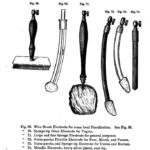Features a variety of Foc.us devices. The doctor interviewed is Dr. Brett Osborn.
Author Archives: John
Zapping Your Brain at Home to Cure Fatigue | The Atlantic
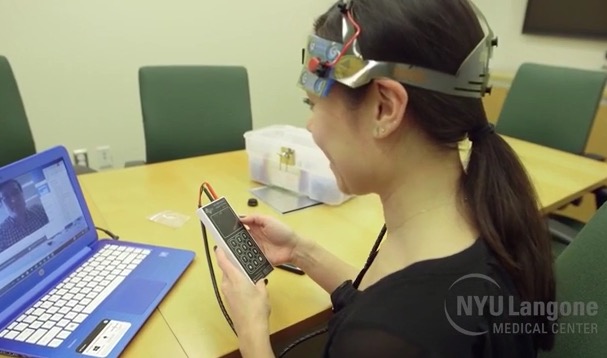 Using remote rehabilitation to administer tDCS to MS patients.
Using remote rehabilitation to administer tDCS to MS patients.
Zapping Your Brain at Home to Cure Fatigue
Each day for two weeks, Bennett would don a headband equipped with moistened sponges and attached to what she called a “big cellphone”—a tDCS stimulator. When she was ready to start the session, a clinician would give her a four-digit code to enter on a keypad, and the current would surge through the wires and into her brain.
Transcranial Direct Current Stimulation Combined With Computer Games At Home Reduces Cognitive Symptoms of Multiple Sclerosis
More about Supervised Neuromodulation: Soterix mini-CT
Caputron Announces New Version ActivaDose ll 29V 2mA Max Setting
Robin at Caputron sends word of their new ‘exclusively from Caputron’ ActivaDose 29V 2mA max Iontophoresis device. My one caveat with the ActivaDose had been the potential for user error in choosing a 4mA setting (rather than the 1 or 2mA setting traditionally used in tDCS research). This new device removes that possibility. This is the device you could confidently show your Mom how to use. The new version maintains the ActivaDose FDA approval for iontophoresis. This new version becomes the device I can recommend in all confidence, also because Caputron stands behind all the products they offer.
Readers of the blog get a generous discount on this, or any other (including GoFlow) device purchased at Caputron using promo code diytdcs at checkout.
Zapping your brain into gear | ABC Action News
Features Anna Wexler who we met in podcast episode #6. Sure sounds like it’s working for Mr. Leinweber. Link to full story: Zapping your brain into gear
Focus announces EEG Dev Kit
Update 2/2/17. Focus just announced functional Near-InfraRed Spectroscopy (fNIRS) capabilities for their EEG Dev kit! 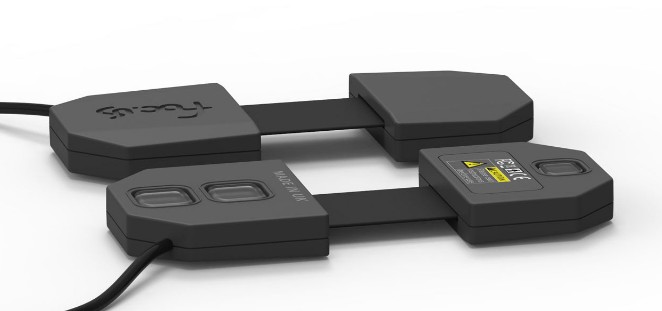
This was announced a few days ago and to be honest, I wasn’t sure what to make of it… a battery-looking EEG thing. Certainly I’m not a ‘Dev’ and so I left it to those who are to parse the details, still… Ah, yes, further details arrived today via email I’m happy to share with you (below). I do get the feeling this will make EEG devs excited.
Update 1/19/17 The focus site now has a photo of their new dry EEG electrode.
Thanks for all your feedback and questions about the focus EEG. A common question has been what exactly is included (see below) and is it everything required (yes).
Included in EEG Dev Kit
- foc.us EEG 24-bit 8-channel EEG with tES & Wi-Fi
- 8 active dry electrodes for EEG, plus bias & reference electrodes
- 2 active bio-potential electrodes for ECG, EOG, EMG or EKG
- 2 wet tES electrodes for tDCS, tACS, tPCS or tRNS
- 10-20 placement cap
- Mains power adapter for recharging
- Raw data access
Next week we will provide more details on the software and SDK for EEG processing.
Sincerely,
team focusP.S. The first 100 66 are available at only $999 $499 – half price!
What I’m excited about is the Focus EEG headset, but a recent tweet exchange indicates we’re a good year away from release.
Treating Depression With tDCS | IEEE Spectrum
Excellent article on the state of prescribed tDCS for depression.
Full article: Treating Depression With tDCS: Startup Ybrain Aims for the Mainstream
In South Korea, Ybrain is betting that these benefits and its slick consumer-friendly design will speed adoption of its device. “It’s designed for home use,” says Ybrain CEO Lee, “so physician can electronically prescribe the device and patients can bring it to their homes.”
NYC Neuromodulation 2017 | Yannick Roy
Yannick Roy of NeuroTechX put together a nice summary of his experience at the Neuromodulation 2017 conference in New York.
Read the whole Medium article here: NYC Neuromodulation 2017
Do not use the “Oreo Cookie” approach where you soak your sponge in your saline solution and squeeze it to remove the extra. Because it over saturates, it’s dripping, it’s very “subjective” and hard to reproduce. Get a syringe and put 8mL of saline solution on your sponge and make sure to also get the corners. Do that prior to insert the electrode in between the 2 layers. If it’s dripping wet, that’s bad (you’re doing it wrong!). You should not have to use a tower on the patient’s neck.
Yannick Roy from NeuroTechX with Marom Bikson, chair of the Neuromodulation Conference. The interview was recorded at City College, NYC, during the Neuromodulation 2017.
Andrea Coravos at the NYC Neuromodulation 2017 Conference trying out Halo Sport (with Brett Wingeier)
Do DIY Brain-Booster Devices Work? | Scientific America
Excellent article traces the rise in tDCS interest. Includes many of the key players and links to important research papers. Do DIY Brain-Booster Devices Work?
I explore how a carefully controlled lab procedure got out to the masses. #tDCS https://t.co/jKambHRWtE
— Esther Wei-Yun Landhuis (@elandhuis) January 10, 2017
Pulvinarneuro / Frohlich Lab Announce XCSITE 100 tDCS tACS Research Device
“By researchers, for reseachers.” In this video Flavio Frohlich presents his Pulvinarneuro.com XCSITE 100 tDCS tACS Research Device. Flavio runs the Frohlich Lab at the University of North Carolina UNC Neuroscience Center. His research has been covered elsewhere in the blog.
NYC Neuromodulation 2017 Conference January 13-15
That’s next weekend! Should be an exciting event. Check out the Abstracts submitted by presenters! Things like…
E-meditation: A novel paradigm using tDCS to enhance mindfulness meditation
tDCS metaplasticity and astrocytic calcium in mice
Individual Differences in tDCS Augmented Working Memory Training
Distracted driving and high-definition tDCS
Emotion perception improvement following high frequency transcranial random noise of the inferior frontal cortex
Adaptive tDCS controller for increasing dose to 4 mA
Dry electrodes for transcranial direct current stimulation (tDCS)
Seeking a Superman’s brain: HD-tDCS of brain networks in exercise performance
Investigating Possible Mechanisms of Action of Transcranial Electric Stimulation in Parkinson’s Disease
Zapping the brain really does seem to improve depression | New Scientist
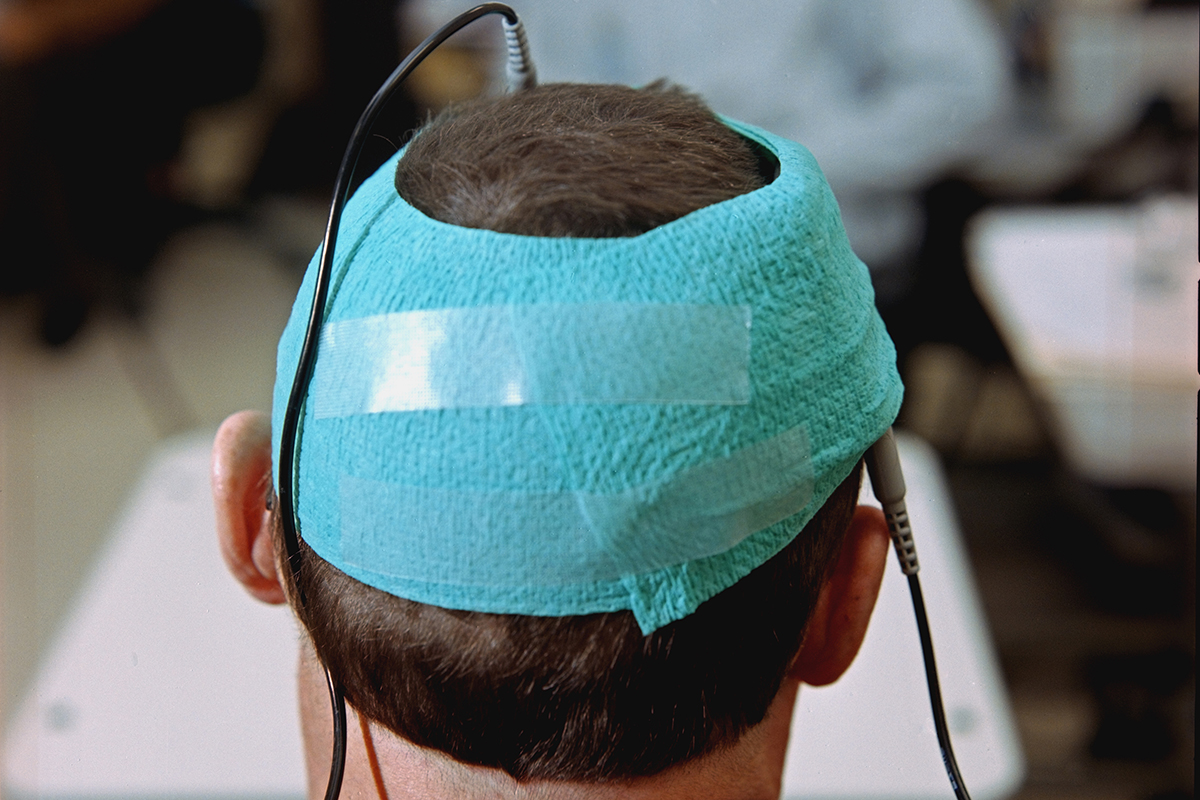
Analysing these high-standard studies revealed that tDCS seems to reliably improve the symptoms of depression, addiction and craving, and fibromyalgia. It also uncovered that the technique does not work for tinnitus, and that the evidence for using tDCS for stroke rehabilitation was not as strong as many had thought.
Full article: Zapping the brain really does seem to improve depression
Full Paper: Evidence-based guidelines on the therapeutic use of transcranial direct current stimulation (tDCS)
Do You Use Scientific Papers To Inform Your Home tDCS Use? Take The Survey!
Hi John, our research centre (CIBF via The Brain Dialogue) is doing a project involving home users of brain stimulation, the details of which can be found here http://www.cibf.edu.au/unintended-consequences-research-project … We’re currently conducting a survey on how these home users find and use scientific literature. If it’s appropriate for your website, we would love if you could post about the survey as we want a broad range of home users to participate and DIYtDCS keeps cropping up in the conversations we have about home use. The survey can be found here https://www.surveymonkey.com/r/unintendedconsequences Please let me know if you have any questions or want more info about the project; you can also reach me via Twitter @ElizabethJPaton
A little more about The Brain Dialogue.
Medical Batteries – The History of Electrotherapy
Update 2/17/17 BBC The strange Victorian fashion of self-electrification
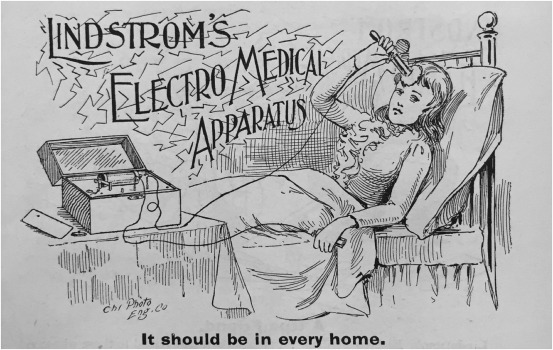
If you’ve been following along very closely you may recall that podcast episode #6 guest Anna Wexler mentioned in passing that she had been researching Ye Olde practice of therapeutically applying current to various parts of the body. Well, an early version of a new paper of hers landed the other day: Recurrent themes in the history of the home use of electrical stimulation: Transcranial direct current stimulation (tDCS) and the medical battery (1870–1920). It’s behind a paywall but here are some highlights.
- Although the home use of tDCS is often referred to as a novel phenomenon, in reality the late nineteenth and early twentieth century saw a proliferation of electrical stimulation devices for home use.
- In particular, the use of a portable electrotherapy device known as the “medical battery” bears a number of striking similarities to the modern-day use of tDCS.
- Many features related to the home use tDCS—a do-it-yourself movement, anti-medical establishment themes, conflicts between lay and professional usage—are a repetition of themes that occurred a century ago with regard to the medical battery.
- A number of features seem to be unique to the present, such as the dominant discourse about risk and safety, the division between cranial and non-cranial stimulation, and utilization for cognitive enhancement purposes.
- Viewed in historical context, the contemporary use of electrical stimulation at home is not unusual, but rather the latest wave in a series of ongoing attempts by lay individuals to utilize electricity for therapeutic purposes.
Also: the full patent file for that image is here: https://t.co/vvqp8sQfuC … other interesting images there too
— Anna Wexler (@anna_wexler) December 3, 2016
Lots of ‘medical battery’ patents here.
And a ton of wonderful images to be found in books in Google’s digitized library.
Most of these came from a single book!
I intentionally electrocuted my brain. Here’s why… | BBC
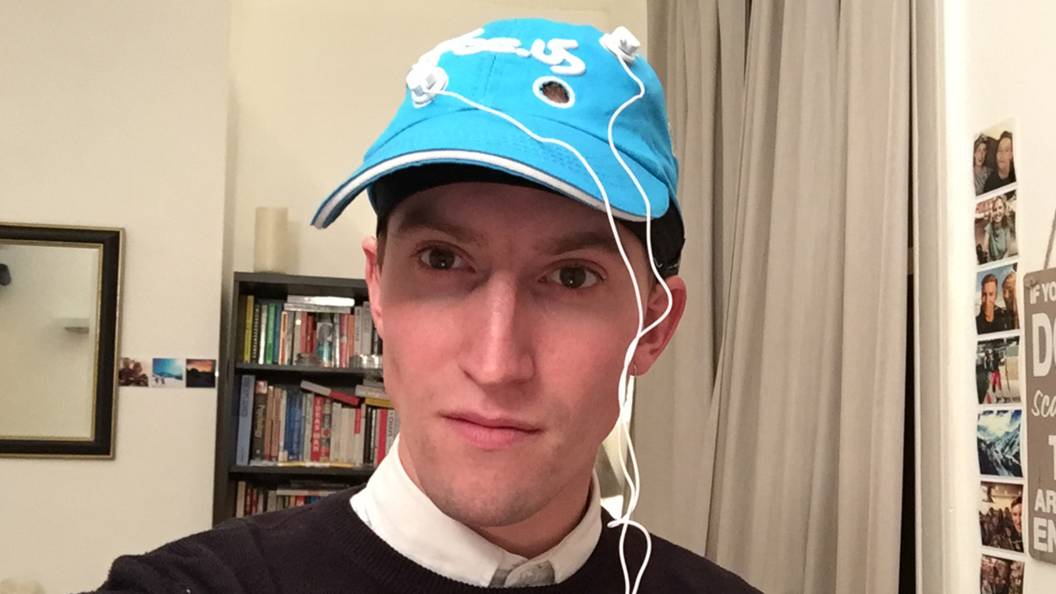
BBC Three’s Nick Arnold takes the Focus Sports for a test drive.
I contacted a few people using tDCS to cure their depression via social media. Mario, 32 from Mexico, told me it was working for him.
“I think it is great. You can see a lot of improvements in your mood. The more you use it the better you feel.”
Another user, eagee, wrote, “I suffered from depression for almost 25 years, and after I started applying tDCS I’ve had two years so far without it.”
If tDCS really can be so life changing for depression patients, why isn’t it more widely available?
According to Dr. Williams, “the equipment is so simple that it cannot be patented in the US. And if no one can own the rights to tDCS, no one can make a profit on it.”
That’s why, according to its supporters, tCDS is being ignored by major drug companies.
Slides From NIMH-sponsored tES Workshop Held September 29th and 30th at NIH
An email from Michelle Pearson at the NIH (because I had signed up for the online version of the workshop) alerted me today to a trove of TES (Transcranial Electric Stimulation) info being made available to us. Presenter slides (in PDF form) from the workshop were available for download. Because the download process was pretty wonky, involving many clicks and declined logins to Dropbox I thought to make them available here as well.
1-lisanby-introductory-remarks Sarah Hollingsworth Lisanby, M.D., NIH
2-rumsey-introduction Judy Rumsey, Ph.D.
3-wassermann-historical-overview Eric Wassermann, M.D., NINDS
4-parra-tdcs-mechanisms Lucas Parra, co-founder of Soterix Medial Inc. @lcparra1
5-frohlich-tacs-mechanisms @FlavioFrohlich, University of North Carolina-Chapel Hill
6-clark-combining-imaging-and-stimulation Vincent P. Clark, PhD Mind Research Network
7-woods-tes-technical-aspects Adam J. Woods, PhD @adamjwoods
8-richardson-blinding Jessica D. Richardson, Ph.D.
9-kappenman-reproducibility Emily S. Kappenman
10-bikson-computational-modeling-design Marom Bikson, CCNY @MaromBikson
11-deng-anatomical-variability-efields Zhi-De Deng, Ph.D., NIH
12-dmochowski-targeted-stimulation-sources Jacek P. Dmochowski, CCNY
13-loo-depression-trials Colleen Loo, Black Dog Institute
14-brunoni-neuropsychiatry-large-trials André R. Brunoni, @abrunoni
15-cohen-motor-learning Leonardo G. Cohen, M.D. NINDS
16-edwards-augmentation-neurorehabilitation Dylan J. Edwards PhD
17-lim-ongoing-trials Kelvin O. Lim, M.D.
18-frohlich-tacs-psychiatry-trials @FrohlichLab
19-charvet_remote-tdcs Leigh Charvet PhD, NYU

